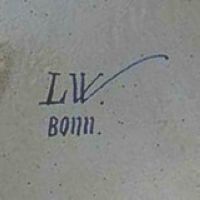
Image 010603-02-01
Very early item just marked with the initials "L W." above "Bonn.".
(Picture: Trude)
The history of the Wessel company starts as the owner of the 'Poppelsdorf Faience Fabrique' named Johann Mathias Rosenkranz had to confess before a notary in Bonn, stating he had accepted the amount of 8490 Reichsthaler enabling him to continue his business. The 'generous' businessman who had helped out was no other than the Bonn resident Ludwig Wessel. The problems persisted and Rosenkranz was forced to sign a three year leasing contract with Ludwig Wessel and his business partner Johann Wilhelm Bruckmann from Deutz near Cologne. During the three years of the contract, Rosenkranz tried to sell the factory a few times but to no avail. Rosenkranz died on July 9th 1828 at the age of 62. The factory was then taken over by the son-in-laws of Rosenkranz and later taken over by the main creditor who led the factory with the Mehlem brothers, finally resulting in the company of Steingutfabrik Franz Anton Mehlem.
To be able to better understand the further proceedings, we will have to make an excursion and look at some family relations. On March 19th 1801 Ludwig Wessel had married his first wife Anna Maria. Her mother Anna Katharina had two children out of first marriage, Anna Maria and Franz Xaver, and was now married to the proprietor Johann Edmund Landwerth who had taken over the business from her first husband Franz Anton Lohe after he had died. The shop located on the 'Sternstraße' road in Bonn was specialized in glass, porcelain and faience products. Landwerth had a large stock of products from the Poppelsdorf factory and stood in good relations to Rosenkranz.
On March 11th 1805, Anna Maria and Franz Xaver signed a contract with their stepfather, verifying the takeover of his business on the base of pension payments. But only a year later, Anna Maria died. Ludwig Wessel was manager of the business by now and father of three children and on May 2nd 1907 married his second wife Gertrud Josepha Hall who belonged to a very wealthy and influent family from Schleiden, a town in the northern Eifel area of Germany.
As the occupation through the French had ended, Wessel started to expand his business using money from the sales of the properties in Schleiden belonging to his wife and some money he had inherited from his unmarried uncle. On January 28th 1818 he bought house number 63 on the 'Kleinhöfchen' road (later 'Martinsplatz'), nearly instantly opening up another shop for glass, porcelain and faience which later became the main shop, including an own small decorating room and small glazing ovens. This main shop later became known as Wessel'sche Porzellan Manufactur, Niederlage Bonn and had own marks shown at the end of the marks section (index number [5]).
On November 4th 1823 he paid off the ground rent for the shop on 'Sternstraße' and on April 23rd 1924 he did the same for the house right next to it that he had bought earlier, thus enabling him to expand the showroom as well as the stock capacity. But Wessel would not have been such a successful businessman if he had only concentrated on his own business. During the expansion years his knowledge of the market situation combined with his other business skills had him focus on another target : the chance of producing his own earthenware.
He saw his chance when Johann Mathias Rosenkranz died. On August 29th 1828 Wessel bought the lower Poppelsdorf grinding mill out of the Rosenkranz heritage and at the same time could also lay hands on a large strip of land next to the Rosenkranz factory. On July 30th 1929 he also bought the upper mill pond and some land surrounding it to secure his water supply. As the leasehold contract is still running, Wessel stays in the factory and uses the newly acquired strip of land to build a new factory for faience and earthenware. As soon as that is finished in September 1829, he transferred his business to the new premises.
Production started directly after moving into the new factory in October 1829 and in 1830 Wessel's son-in-law Karl von Thielmann joined the company. It was planned for Thielmann, who had renounced his military career, to be the technical director and thus enabling Ludwig Wessel to concentrate on the financial aspects of the company. So Thielmann went on an educational trip to the high class manufacturers in England and after his return instantly started to learn the necessary chemical proceedings under professor Gustav Bischoff at the Bonn University.
As the woods in the area around Bonn have drastically decreased and coal had been used in other companies with great success, Wessel and Thielmann decide to invest into the conversion of their kilns and use coal in future as it promised a better yield and would also result in a higher quality. Thielman instantly has a model built, based on designs he had seen in the factory of the Davenport brothers during his trip to England. The resulting kiln was fired with hard coal the company buys in the Saar area and after some tests the first successful glaze firings were made.
Based on the new technology, the factory expanded mainly in the processing areas and a refit of the lower Poppelsdorf mill took place which was in addition supported by a steam engine by 1831. In the same year the Porzellan- und Steingutfabrik Ludwig Wessel GmbH & Co. had a total workforce of 58 (including ten apprentices). Business went well, so Wessel decided to buy an estate near Walldorf called 'Rodenkircher Hof' in 1833. The workforce further increased to 70 until 1836 and as shown in an official business report to the mayor of Bonn, the workforced increased up to 96 (86 male and 10 female) before December 26th 1838. But before that, the great businessman Ludwig Wessel on March the 23rd 1838 died at the age of 62.
After the death of Ludwig Wessel his 24 year old son Franz Joseph Wessel together with his brother-in-law Karl von Thielmann took over the company step by step. First, they took over the business shares of Franz Xaver Lohe in July 1838, followed by the shares that had belonged to Anna Maria Wessel on October 7th 1839. The money for these transactions as well as the normal heritage payments was later compensated by selling the 'Rodenkircher Hof' estate on April 14th 1840.
The Mehlem brothers had other problems. As there was no possibility for expansion and their factory itself was too old to be refitted for further use the Mehlem brothers sold their whole facility to Wessel and transferred their business to the newly built premises between the river Rhine and the 'Coblenzer Straße' just on the heigth of the 'Zweite Fährgasse' during the first week of 1840.
Wessel and Thielmann of course saw the possibility of expanding their factory and to create a greater product range for the still expanding market of fine earthenware. Now also owning the upper Poppelsdorf mill, extensive conversions and upgrades of the whole factory were made, primary on factory parts needed for the production of basic materials like the grinding mills. After that, they went through a second phase, enhancing and extending the throwing and sculpting rooms as well as the decorating rooms, all in all greatly increasing the capacity of the plant. The new kilns were downdraft kilns and were fed with hard coal from Westphalia.
During 1840 the profitability was also examined and Wessel and Thielmann found out that it would be much cheaper to import basic materials via ship. So during the next years the kaolin and feldspar came from Cornwall, the ball clay from Dorsetshire and the flint came from the French coast. All these materials arrived via ship near Dordrecht and were then taken upstream with Rhine barges, ending up directly in Bonn. After the extensive conversions were finished, Karl von Thielmann left the company as active partner in 1842 to continue his military career.
Wessel and Thielmann on March 3rd 1844 finally took over the company shares of both Carl Ludwig and Carl Wessel. On June 18th 1844, Franz Joseph Wessel then married the well-known daughter of Nicolaus Joseph Baum (from Bonn). Thielman was still totally occupied by his military career and when he lost his wife Anna Gertrud in 1847, he sold the shares belonging to his children as well as his own to Franz Joseph Wessel.
The shop for glass, porcelain and faience on the 'Sternstraße' had been running very well all the time. On July 26th 1851, Franz Joseph Wessel sold the business to Friedrich van Hauten who had been working in the showroom for a few years (marks shown under index number [6]). Even in this case, Wessel was a businessman just like his father. The new shop owner had to sign a contract that only allowed him to sell porcelain from Berlin (KPM) or Wessel products which he could purchase at reduced prices through the main shop on the 'Kleinhöfchen' road. On April 15th 1861, Wessel had bought the house number 62 on 'Kleinhöfchen' road, thus enabling the main shop to expand rapidly.
On March 13th 1862 Wessel applied for permission to build a warehouse on the premises of 'Kleinhöfchen' number 63 and a year later to build a new house on the premises of 'Kleinhöfchen' number 62. Both building permissions are granted and the company of Johann Jacob Brombach (Bonn) gets the order to start with the construction of the new three storey building. On March 13th 1865 Brombach additionally applied for a permission to also install a kiln, receiving instant permission.
Franz Joseph Wessel introduced his two sons to the business quite early. Nicolaus Joseph was 22 years old when he was sent on an educational trip to England during 1968 and on his return instantly received the title of technical director for the Poppelsdorf factory. Carl Ludwig who was simply called Louis also went on an educational trip and gathered great business experience. He was supposed to take over the part of financial director of the business and had learnt his lessons well. After working at his father's side a short time he had to continue on his own as Franz Joseph Wessel suddenly fell ill.
During the years that followed 1868 the factory constantly expanded and was optimized to ensure a higher throughput. Especially the grinding mills and decoration rooms went through many changes and new kilns were installed, mainly because the factory had started to produce 'real' hard porcelain as well as the softer 'English' porcelain from around 1870 as an addition to the normal product range. All this time the company had been relying on customers located in the region or traveling salesmen that represented the traditional way of distribution. That changed in 1875 as the company also started to ship products overseas and England. At that time England had a worldwide monopoly on earthenware and that a German company could be competitive enough to successfully introduce their products says enough about the quality and pricing of the Wessel products.
At that time Franz Joseph Wessel and his family were still living in the house that had belonged to his father. It was also located on the 'Kleinhöfchen' road that had in the meantime been renamed to 'Martinsplatz'. Wessel decided that it was simply to small and had the architect and urban development specialist of Bonn, von Noel build a mansion during 1875 and 1876. After it was finished Wessel spent the last of his remaining energy instructing his sons and after being constantly ill for over ten years, died on February 19th 1879 at the age of 64.
Based on the demand from oversea sales and the planned introduction of majolica the factory expanded again during 1880, enhancing and extending the throwing and sculpting rooms as well as the decorating rooms even further. Additional kilns and glazing ovens were installed and the company receives its second steam engine. It should be noted here that over the years many manufacturers had been experimenting with different mixtures to give their earthenware products a more porcelain-like look and feel. The companies of Franz Anton Mehlem and Wessel were leading in this technology and extremely successful between 1880 and 1910. It is also known that from 1880 the factory already had an own department for wall tiles as an impressive picture measuring 2.40 by 3.40 meters and made from 204 painted wall tiles was shown on the Frankfurt fair in 1881.
The last expansion of the factory was followed by a complete new construction of the shop and warehouse on 'Kleinhöfchen' road. Based on the building permissions granted 1862, house number 63 had already been torn down and now house number 62 had to follow. On April 12th 1883 the architect Heinz Gierlich requested permission for a new building for the shop and warehouse which was granted on April 20th 1883. All in all the Wessel company by 1909 owned a complete block of buildings including offices, the shop and warehouse, a decoration studio and a kiln for glazing purposes. The newly constructed road which led past one side of the block and away from Martinsplatz was named Wessel-Straße ("Wessel road").
After his brother died on June 8th 1888, Carl Ludwig Wessel transformed the business into a limited company and shares could be bought as from November 27th 1888. After the transformation, Wessel had lost part of his annual profit but had strongly increased his liquidity, allowing him to invest in further projects. In 1890 he bought the colliery of P.J. Wirtz in Langendreer, thus securing the supply coke needed for the kilns. During 1889 the factory needed three new kilns especially for porcelain processing and at the same time a railway line was built, connecting the factory with the goods station in Bonn as from January 11th 1890. Through 1890 the demand for all products was slowly declining and the company starts producing wall tiles as demand in that sector is rising. Wessel had resigned as director and board member shortly after the transformation into a limited company and was director of the supervisory board. With his knowledge of the market and based on the experience in producing wall tiles he started to concentrate on the founding of a new company and on August 13th 1895 applied for permission to build a new factory in Bonn-Dransdorf which was granted. The newly built Wessel's Wandplatten-Fabrik started production of glazed wall tiles in 1896.
In the next few years the Poppelsdorf plant led by the director Julius Rossberg is modernized to cope with the now again increasing demand. During 1895 the company applies for permission to build an additional chimney, a few new buildings and the installation of two additional boilers, followed by further buildings in March 1896. In June 1899 they wanted permission to expand the glaze foundry and in March 1912 a permission for a boiler house with chimney for another steam engine. By now, the plant had twenty-eight muffle kilns, ten ovens for glazing, eight ovens for finest porcelain and three steam engines with tall chimneys which did not change until the First World War broke out.
Things looked good, business was fine and on June 15 1889 Carl Ludwig Wessel applied for permission to build a new mansion for himself and his family which was extended via a permission applied for on September 26th 1894. But slowly things had begun to change. During September 1911 everything still seemed fine, but after that orders decreased rapidly. The reason for this was that the producers of earthenware had founded a cartel to stabilize their prices which meant of course that from October 1st the products were more expensive. The customers had heard of these plans early and taken in a huge stock during September which of course resulted in a cut back in production numbers.
In the years after 1914 the factory could only continue with a workforce of russian prisoners of war that replaced those workers that had to leave for military service. Between 1916 until 1924 the Porzellan- und Steingutfabrik Ludwig Wessel AG was led by the new director Doctor Max Heine who had to cope with some of the worst years the company had seen so far - but it was not over yet. To avoid losing money through inflation, the directors decided to invest all available money in new buildings and machines as well as land that could be used for further expansion. Of course the whole building industry was not able to cope with such a high demand at the moment and so during 1920 the Ludwig Wessel AG took over two thirds of the Bonner Kachelofenfabrik AG and three years later took over the Steingutfabrik Amberg which was integrated into the Ludwig Wessel AG as a branch to be able to supply the south German market.
During 1925 the main shop was sold to the Mandt & Mendel company which was allowed to continue using the name Wessels Porzellan Manufaktur with the addition 'Geschäftsleitung E. Mendel' (Manager E. Mendel). A year later 'Mandt & Mendel' sold the shop to the jew Isidor Rosenbaum who was still owner in 1938 and in 1940 the owner is stated as Johannes Weber. The buildings where destroyed during World War II and during 1951 and 1952 the Bonn newspaper Bonner General-Anzeiger built an advertising section there.
Under the new general director Erich Korsukewitz the factory was modernized from 1925 onwards. An installation was made that put the hot air from the kilns to further use and a new glaze smeltery was installed after the permission had been applied for on January 30th 1925. On March 5th the same year the company also applied for permission to build two new kilns and a generator house which was also granted. During the night of February 5th and 6th, disaster struck as a fire broke out that nearly destroyed the whole Poppelsdorf plant.
Before the fire, plans had been made to replace the old plant with a new one to the north of Bonn. Standing in front of the remains of years of hard work, the directors had to make a decision: rebuild the plant here or at a new location that offered more room for expansion. They tried to sell the area to the city of Bonn, but the price of one million Marks was way too high. The directors then tried to receive a loan or a guarantee to stand surety from the city representatives on the amount of 800,000 Marks, but to no avail.
Talks continued between the Prussian state, the Bonn medical university and the agricultural college. At the same time the nearby town of Siegburg was interested in having the company move there as it would earn them lots of tax money. The Ludwig Wessel AG tried to play off the different parties against each other and even threatened to sack the complete workforce of 580 to 600 people at once. But they did not stand a chance. During the supervisory board meeting on February 5th 1929, the management decided to sell the plant to the Friedrich Butzke & Co. AG which had merged with the Armaturenfabrik Bernhard Joseph AG three years earlier. The Bernhard Joseph & Butzke AG was situated in Berlin and specialized on sanitary fittings. A few days later, on February 25th 1929 the management had to vote on the conditions of the takeover.
After the takeover the company was renamed and the product range completely changed as from 1930 which of course had followed a complete conversion of the factory to cope with the new product range of washbasins, toilets, bidets and other sanitary products as well as laboratory products made from sanitary porcelain. The factory had a workforce of 1,400 people before World War II. Relying on the idea of distributing the products through wholesalers, Butzke founded the Wessel's Porzellanmanufaktur Boehringer & Co. KG as distributing company and secondary warehouse, located 'Clemens-August-Straße 18'. After the factory was destroyed in a fire during 1944, a new one was built directly next to the railway line that belonged to the Wessel Keramische Werke AG.
Following the end of World War II the company had to start producing sanitary products made of stoneware until about 1950 because the necessary raw materials were rare. For a few years the company struggled on but times had changed and the unprofitable facilty had to be closed. During August 1969 the Northrhine-Westphalian ministry for land structuring and house building bought the grounds for 8.5 million Marks. The company was allowed to stay in the factory until September 30th 1970 so that the workers could look for new jobs.
The remains of the Wessel Keramische Werke AG were removed until May 7th 1970 and the company was no more. The remaining two chimneys were blown up on September 22nd of the same year, and during 1977 the whole area was demolished. The Wessel era, having lasted for over 140 years, came to an end.
Dating Wessel marks is nearly impossible as no specific documents or catalogs exist and some marks seem to have been re-used during different periods. That means that all dates given here are roughly guessed or based on logical deduction. Please note that the series "Marietta" and "Favorita" were for export to Southern America only. Please also take note that with similar marks the height can vary between 12 and 32 mm.
Mold numbers were normally impressed or already added to the mold itself. Other numbers used were control numbers for internal use, like the personal number of a decorator which was often (but not always) a hand painted number in gold. Wessel products normally had the name of the series coded as an impressed or under glaze number combination. These combinations where mostly three or four digits followed by a single digit showing the number of the part in a set, sometimes followed by another one or two digits noting the size of a piece that was available in different sizes.
The series "Clara", "Hamburg", "Rhein" and "Rosina" had real names which were always combined with the mark. Other exceptions also had real names that were detached from the mark and used under glaze as stamped or hand written names. These were "Astra", "Daisy", "Elsa", "Favorita", "Godesberg", "Helena", "Ida", "Köln, "Leonore", "Lotos", "Mainz", "Marietta", "Martha", "Mignon", "Minerva", "Paris", "Parsifal", "Polly", "Rheinland", "Rheingold", "Rüdesheim", "Theresa" and "Trier".

Image 010603-02-01
Very early item just marked with the initials "L W." above "Bonn.".
(Picture: Trude)
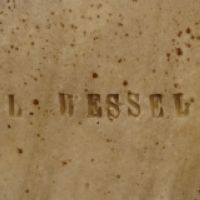
Image 010603-02-02
Early item with a combination of impressed "L. Wessel" ...
(Picture: Trude)
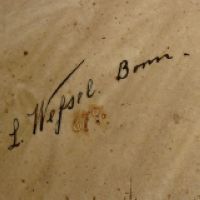
Image 010603-02-03
... and handwritten "L. Wessel, Bonn.'.
(Picture: Trude)
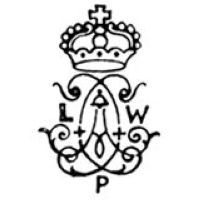
Image 010603-02-04
Under glaze, used between 1875 and 1900 (rare use until 1910), mark was registered at the Königliches Amstgericht Bonn on August 10th 1892.
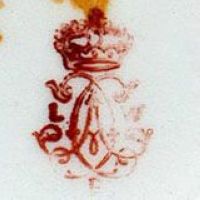
Image 010603-02-05
Example of the mark on the left.
(Picture: 'Rachel, Pamela & Bruce')
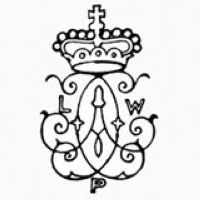
Image 010603-02-06
Under glaze, used between 1875 and 1900 (rare use until 1910).
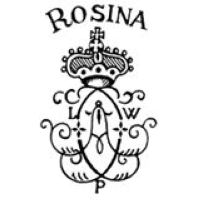
Image 010603-02-07
Under glaze, used between 1875 and 1900 (rare use until 1910). "Rosina" was the series.
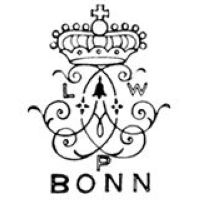
Image 010603-02-08
Under glaze, used between 1875 and 1900 (rare use until 1910).
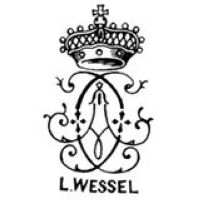
Image 010603-02-09
Under glaze, used between 1875 and 1900 (rare use until 1910).
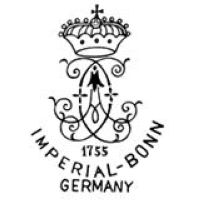
Image 010603-02-10
Under glaze, used between 1875 and 1900 (rare use until 1910), "Imperial Bonn" used on products for export.
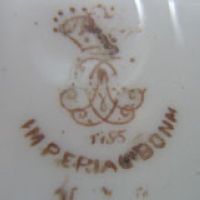
Image 010603-02-11
Example of previous mark, first "Imperial Bonn" version used on products for export.
(Picture: Tessa Karlsson)
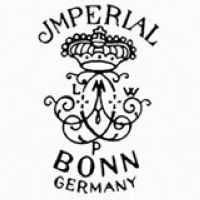
Image 010603-02-12
Under glaze, used between 1875 and 1900 (rare use until 1910), second JMPERIAL BONN version for export.
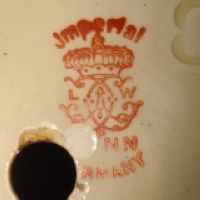
Image 010603-02-13
Example of the previous mark with straight instead of curved "Bonn".
(Picture: David Corper)
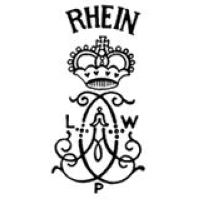
Image 010603-02-14
Under glaze, used between 1875 and 1900 (rare use until 1910). "Rhen" was the series.
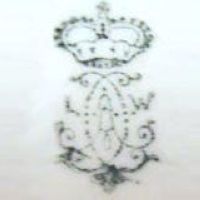
Image 010603-02-15
Example of the mark.
(Picture: John Carass)
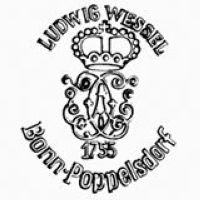
Image 010603-02-16
Impressed, used between 1875 and 1900 (rare use until 1910).
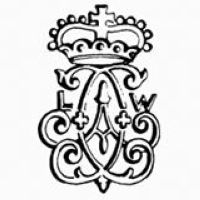
Image 010603-02-17
Impressed, used between 1875 and 1900 (rare use until 1910).
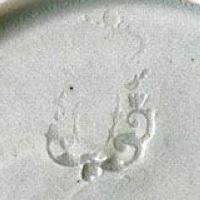
Image 010603-02-18
Example of the mark mentioned before.
(Picture: 'Rachel, Pamela & Bruce')
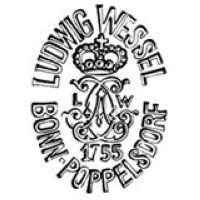
Image 010603-02-19
Impressed, used between 1875 and 1900 (rare use until 1910).
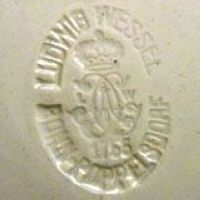
Image 010603-02-20
Impressed, used between 1875 and 1900 (rare use until 1910).
(Picture: Dennis Lennon)
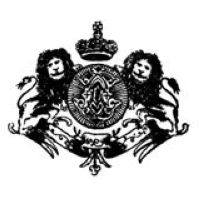
Image 010603-02-21
Impressed mark as used on sanitary products.
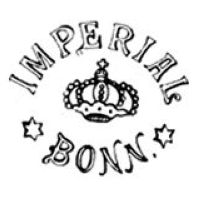
Image 010603-02-22
Under glaze, used on products for export.
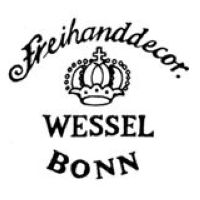
Image 010603-02-23
Under glaze.
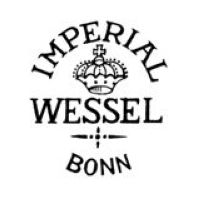
Image 010603-02-24
Under glaze, used on products for export.
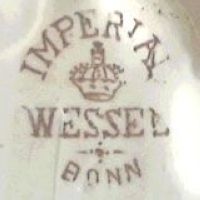
Image 010603-02-25
Under glaze, used on products for export.
(Picture: www.potterymarks.co.uk)
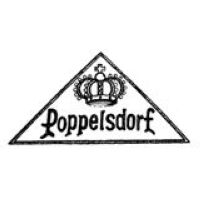
Image 010603-02-26
Under glaze.
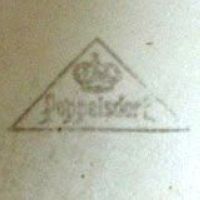
Image 010603-02-27
Example of the beforementioned mark.
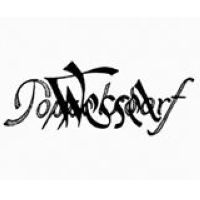
Image 010603-02-28
Under glaze, the style of this mark is very similar to a mark used by the factory in Saargemünd (Lorraine).
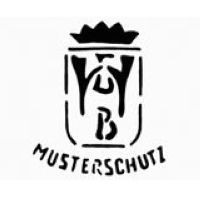
Image 010603-02-29
Under glaze. Stylized "LWB" standing for Ludwig Wessel, Bonn.
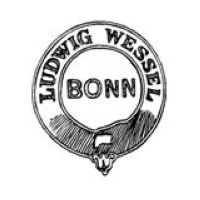
Image 010603-02-30
Under glaze.
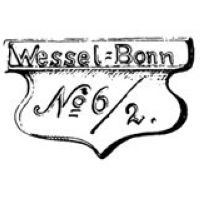
Image 010603-02-31
Used between 1880 and around 1910, mark is direct mold positive (type 1).
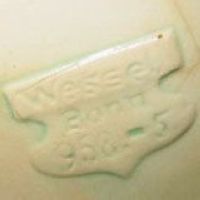
Image 010603-02-32
Used between 1880 and around 1910, mark is direct mold positive (type 2).
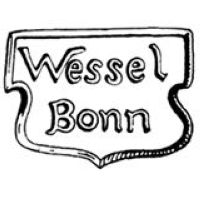
Image 010603-02-33
Used between 1880 and around 1910, mark is direct mold positive (type 3).
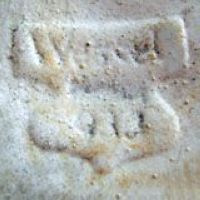
Image 010603-02-34
Used between 1880 and around 1910, mark is direct mold positive (type 4).
(Picture: Meintje Eyzenga)
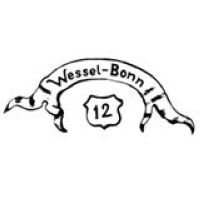
Image 010603-02-35
Impressed.
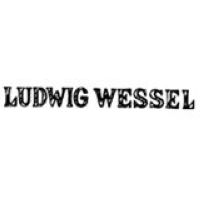
Image 010603-02-36
Under glaze.
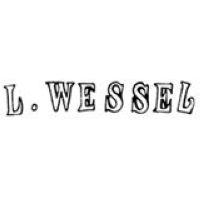
Image 010603-02-37
Impressed.
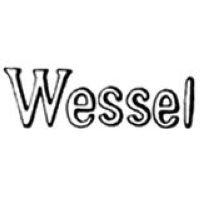
Image 010603-02-38
Impressed.

Image 010603-02-39
Impressed.

Image 010603-02-40
Impressed, stands for "Ludwig Wessel".
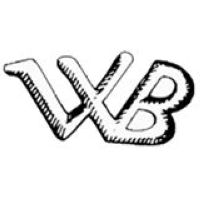
Image 010603-02-41
Impressed, stands for "Wessel, Bonn".
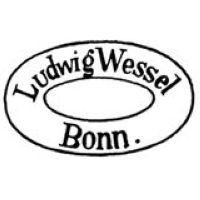
Image 010603-02-42
No further information.
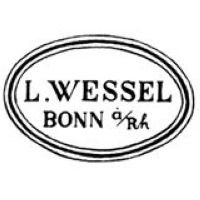
Image 010603-02-43
No further information. The "a/Rh" stands for "am Rhein" ("upon Rhine").
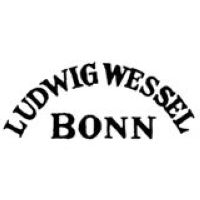
Image 010603-02-44
Mostly used in combination with the mark of the Wessel'sche Porzellan Manufactur, Niederlage Bonn.
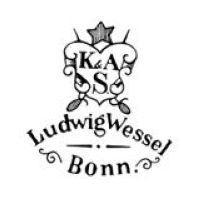
Image 010603-02-45
Used between 1889 and around 1905, Wessel manufacturer mark combined with decorator mark of Krautheim & Adelberg.
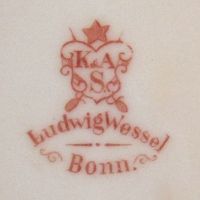
Image 010603-02-46
Example of the previously shown mark, here in red.
(Picture: Frans Friedheim)

Image 010603-03-01
Stands for Ludwig Wessel Actiengesellschaft and was used between 1888 and 1929. The design could indicate later years of that period.
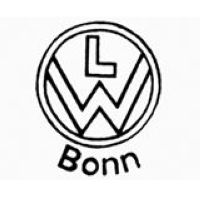
Image 010603-03/04-01
Underglaze, used with or without "Bonn" from around 1910 until 1969.
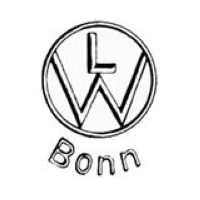
Image 010603-03/04-02
Impressed, used with or without "Bonn" from around 1910 until 1969.
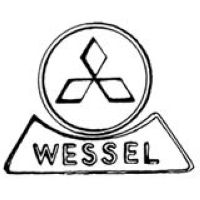
Image 010603-04-01
Impressed, with or without the "Wessel" part. Probably used from 1948 onwards as the company used paper with that logo from then on.
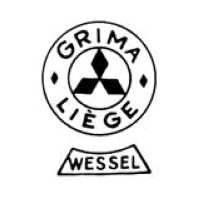
Image 010603-04-02
Probably used from 1948 onwards as the company used paper with a similar logo from then on.
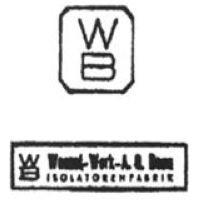
Image 010603-04-03
Mark for insulators, "Wessel-Werk-AG Bonn, Isolatorenfabrik".
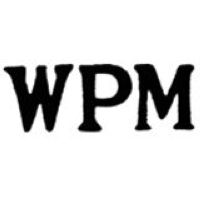
Image 010603-05-01
Stands for Wessel'sche Porzellan Manufactur.
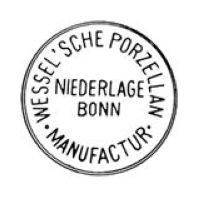
Image 010603-05-02
Used with mark #31 on products decorated and glazed in the main shop. Is also found on products from other manufacturers.
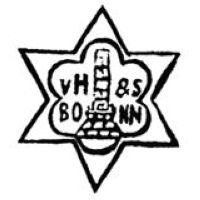
Image 010603-06-01
Company mark.
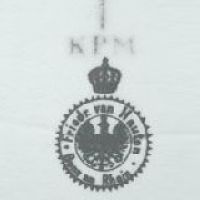
Image 010603-06-02
Company stamp depicted on a KPM earthenware plate.
© 2004-2025 C.S.Marshall, all rights reserved